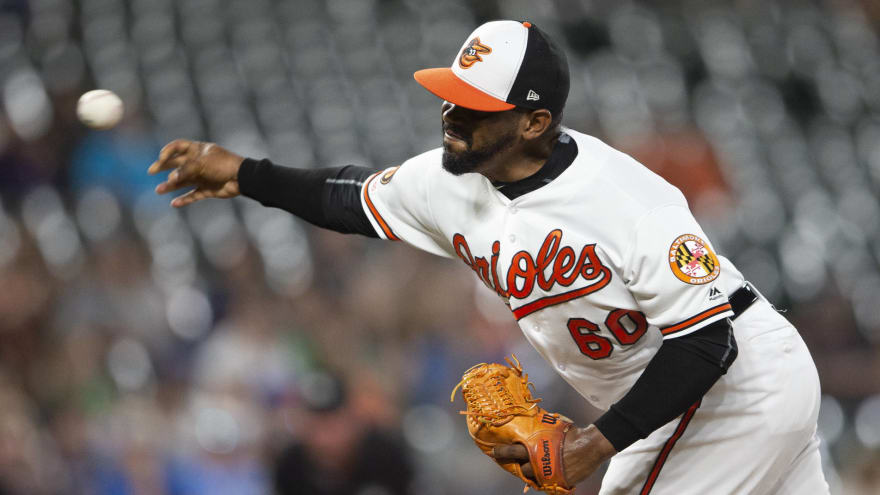By Justin Mears | Last updated 8/22/19
A last-place finish in the American League East in 2017 convinced Baltimore Orioles management the team needed to jettison veterans and start over with younger, cheaper talent. The results of the new organizational philosophy have been disastrous: Baltimore finished 47-115 in 2018, an astounding 61 games behind first-place Boston, and this season’s team again has MLB’s worst record (41-86).
Only three teams in the modern era (since 1900) have lost more than the Orioles did last season: the 1962 New York Mets (40-120), 2003 Detroit Tigers (43-119) and 1916 Philadelphia Athletics (36-117). Baltimore’s home attendance has plummeted, too. In 2018, Camden Yards often has looked like a ghost town. The Orioles drew only 1,564,192 fans last season, their lowest recorded home attendance in a non-strike shortened season since 1978. This season they are on pace to draw even fewer fans.
So what’s the plan for Baltimore to pull out of its dreadful spiral?
Two of the prospects Baltimore received from the Dodgers in the Manny Machado trade last summer — outfielder Yusniel Diaz and pitcher Dean Kremer — are expected to become centerpieces of this organization’s next contender. The Orioles hope right-hander Kremer can join first-round picks from 2017 and 2018 (southpaw DL Hall and righty Grayson Rodriguez) to form 60 percent of the club’s long-term rotation. They think Diaz can be a dangerous right-handed hitter — they better be right. Baltimore once held similar hopes for outfielder Austin Hays, a third-round pick in 2016, but he has underwhelmed. The Orioles believe the switch-hitting catcher they took first overall this past June, Adley Rutschman, will be a superstar. Baltimore likely will have the No. 1 overall pick in the next draft, too.
But even if those players develop the way the organization hopes, none will help the Orioles soon. And none of them can change the fact that before Memorial Day most Baltimore sports fans were focused on NFL season.
The remainder of this season must be spent determining the long-term keepers on the roster. First baseman Trey Mancini is Baltimore’s best offensive player, and while he’s on pace to hit more than 35 homers, he’ll be 28 before opening day next year. Is he more useful to the Orioles in the middle of their lineup or as trade bait for talented young minor leaguers? The answer is almost certainly the latter. Switch-hitting second baseman Jonathan Villar’s case is similar. With a breakout offensive performance, 25-year-old third baseman Renato Nunez is firmly in Baltimore’s plans. The Orioles were thrilled to add shortstop Richie Martin, the No. 1 pick in last year’s Rule 5 draft, but he has looked overmatched in the majors. Baltimore must decide this winter if the 24-year-old deserves an extended look .
With the exception of lefty John Means, the team’s lone All-Star, the Orioles don’t have another pitcher we could make a reasonable case for inclusion on the team in two years. Closer Mychal Givens is the team’s most talented pitcher, and while he has struggled this season, it’s stunning the club didn’t attempt to move him at the trade deadline. He could still be traded in the offseason.
Baltimore also must resolve what to do at first base. Chris Davis hit 53 homers for the O’s in 2013 and nearly won MVP, but the massive contract he received in 2016 is an albatross. Davis’ batting average again is well below .200, and the club owes him $17 million a year through 2022. Baltimore couldn’t get a rosin bag for him in a trade now. Eating more than $50 million in salary doesn’t seem like a good option, but it wouldn’t be stunning if he were released in the winter.
Baltimore’s plan to rise from the depths mirrors efforts by the Astros and Cubs. San Diego’s rebuilding effort is another good example for the Orioles.
From 2011-2013, the Astros never won more than 56 games in a season. In all, Houston endured six straight losing seasons. But extended futility led to high draft picks that turned into George Springer, Carlos Correa, Alex Bregman and Kyle Tucker. The Astros missed in the draft on pitchers Mark Appel and Brady Aiken, but the organization had built up enough depth to overcome that.
When Houston’s young core matured, the team became attractive for veteran free agents. In one winter, the Astros supplemented youth with the likes of Carlos Beltran, Josh Reddick and Brian McCann. The result was the team’s first World Series title in 2017. Now Houston may be MLB’s model franchise.
The Cubs’ story is similar. Baseball’s once-lovable losers suffered through losing seasons from 2010-2014. But they used their high picks to draft Javy Baez, Albert Almora Jr., Kyle Schwarber and Kris Bryant. Chicago traded for a young, unheralded first baseman named Anthony Rizzo. Because the core developed into one of the NL’s best and the Cubs continued to draft well, Chicago could afford to deal immensely talented minor league infielder Gleyber Torres to the Yankees at the 2016 trade deadline for closer Aroldis Chapman. The Cubs finally won the World Series that season, breaking the Curse of the Billy Goat and sending the Windy City into delirium.
There are risks to a full re-build rather than a retooling. Until Baltimore wins consistently attendance will continue to suffer. Casual fans won’t attend games or watch on TV. A generation of young fans could become turned off by the game. Franchise marketability will take a hit. Nobody expected Baltimore to be good in 2019. But few expected them to lose games 23-2, as the Orioles did recently against the Astros.
Bottom line: Orioles fans must be patient. This re-construction is going to take awhile.




